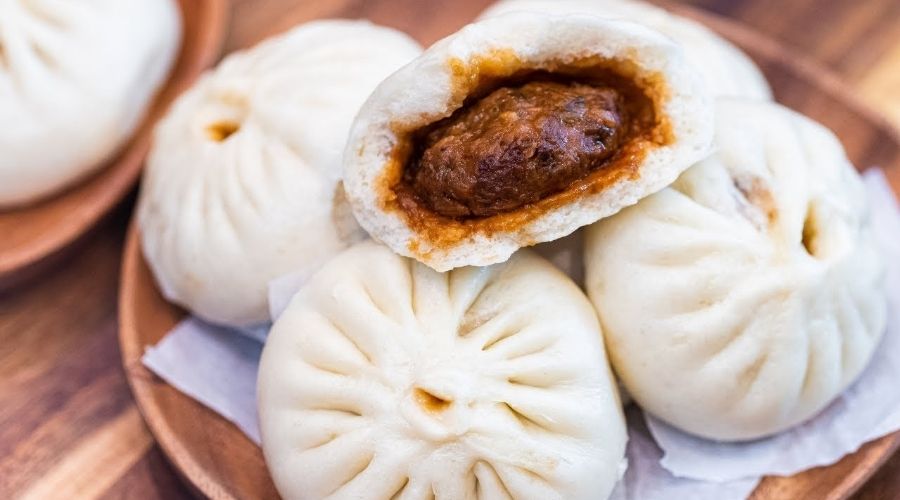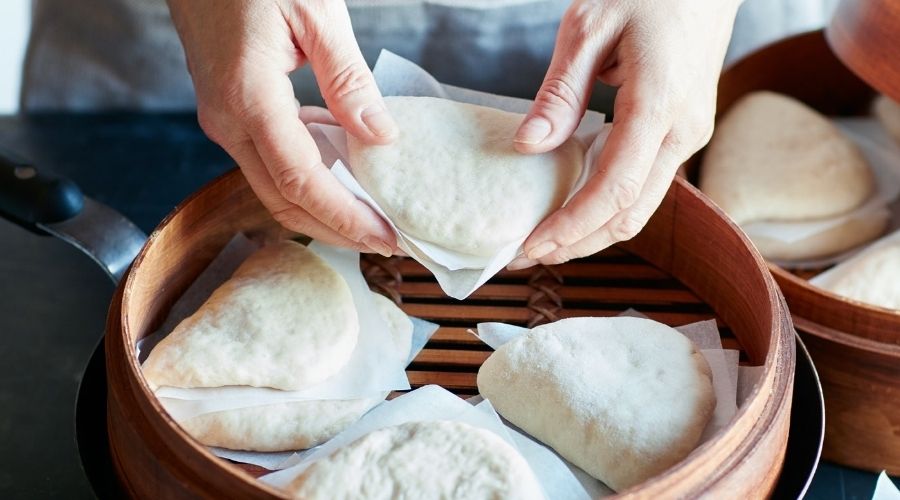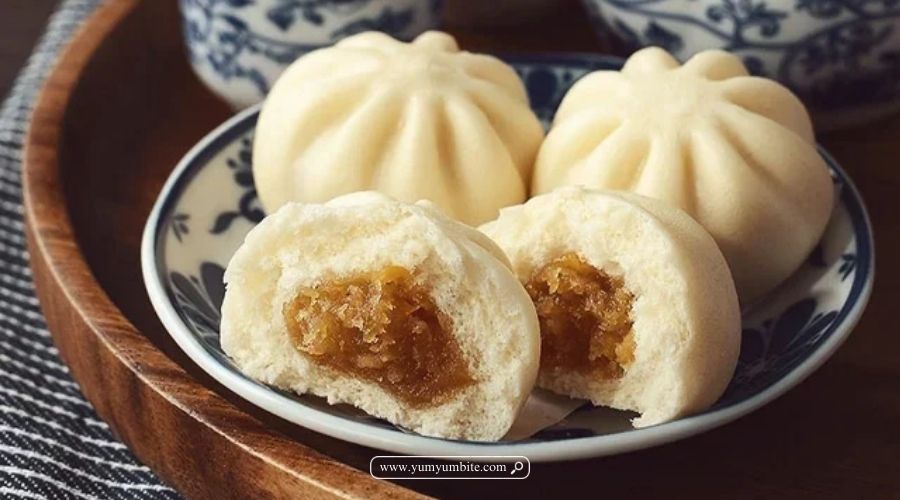Cooked bao buns are a delightful treat, known for their soft, fluffy texture and savory fillings.
Whether you’ve made a large batch for a gathering or have leftovers from a meal, knowing how to store cooked bao buns properly is essential to maintain their quality and flavor.
Improper storage can lead to dried-out buns or spoilage, which can be disappointing after putting in the effort to prepare them.
In this article, we’ll explore the best practices for storing cooked bao buns, from refrigeration to freezing, along with tips on how to tell if they’re still good to eat.
With the right storage techniques, you can enjoy these delicious buns at your convenience!
Why Storing Cooked Bao Buns Properly Matters
Storing cooked bao buns properly is crucial for preserving their delightful texture and flavor.
Bao buns are known for their soft, Pillowy exterior, which can easily become dry or stale if not stored correctly.
Proper storage helps maintain their moisture, ensuring that each bite remains fluffy and delicious.
Additionally, bao buns are often filled with various ingredients, and improper storage can lead to spoilage or an undesirable taste.
By keeping them in an airtight container or wrapping them securely, you can prevent exposure to air and moisture, which can compromise their quality.
Moreover, storing bao buns correctly extends their shelf life, allowing you to enjoy them over several days without sacrificing taste or safety.
Ultimately, taking the time to store cooked bao buns properly not only enhances your culinary experience but also minimizes food waste, making it a win-win for both your palate and your kitchen.
How to Store Cooked Bao Buns: A Complete Guide

Storing cooked bao buns properly is essential for maintaining their soft, fluffy texture and delicious flavor.
Whether you have leftovers or want to prepare a batch for later, here’s a comprehensive guide to help you store cooked bao buns effectively.
1. Cool Down the Buns
Before storing, allow the cooked bao buns to cool to room temperature. This helps prevent condensation, which can lead to sogginess and spoilage.
Avoid placing hot buns directly into storage containers, as this can create excess moisture.
2. Choose the Right Storage Method
There are a few options for storing cooked bao buns, depending on how long you plan to keep them:
- Short-term Storage (Refrigeration): If you intend to consume the buns within a few days, store them in the refrigerator. Use an airtight container or a resealable plastic bag to keep them fresh.
- Long-term Storage (Freezing): For longer storage, freezing is the best option. Wrap each bao bun individually in plastic wrap or aluminum foil, then place them in a freezer-safe bag or container. This prevents freezer burn and helps retain their quality.
3. Portion Control
If you’ve made a large batch of bao buns, consider dividing them into smaller portions before storing. This makes it easier to thaw only what you need, reducing waste and maintaining freshness.
4. Label and Date
Always label your storage containers or bags with the date of storage. This helps you keep track of how long the bao buns have been stored and ensures you consume them within a safe timeframe.
5. Thawing Frozen Bao Buns
When you’re ready to eat your frozen bao buns, you can thaw them in the refrigerator overnight or steam them directly from frozen.
Steaming is the best method to regain their original softness. If you prefer, you can also microwave them with a damp paper towel for quick reheating.
6. Check for Quality
Before consuming stored bao buns, always check for signs of spoilage. Look for any unusual odors, discoloration, or changes in texture. If anything seems off, it’s best to discard them.
7. Use Creative Recipes
Cooked bao buns are versatile and can be used in various dishes. If you have leftover buns, consider using them as a base for sliders, sandwiches, or even as a side for soups and stews.
By following these guidelines, you can ensure that your cooked bao buns remain delicious and ready to enhance your meals whenever you desire.
Proper storage not only extends their shelf life but also preserves the delightful taste and texture that make bao buns a favorite treat.
What to Look for While Storing Cooked Bao Buns

When storing cooked bao buns, it’s important to consider several factors to ensure they remain fresh, flavorful, and safe to eat. Here’s what to look for:
1. Cooling Before Storage
Make sure the bao buns have cooled completely to room temperature before storing. This prevents condensation from forming inside the container, which can lead to sogginess and spoilage.
2. Airtight Containers
Choose airtight containers or resealable plastic bags for storage.
These help keep out moisture and air, preserving the buns’ soft texture and preventing them from drying out or becoming stale.
3. Portion Sizes
Consider portioning the bao buns based on how many you typically consume at once.
Storing them in smaller batches allows you to thaw only what you need, keeping the remaining buns fresh for longer.
4. Storage Temperature
Determine how long you plan to store the bao buns. For short-term storage, the refrigerator is suitable, while freezing is ideal for longer-term preservation.
Ensure that your refrigerator is set to a temperature below 40°F (4°C) and your freezer at 0°F (-18°C) or lower.
5. Labeling
Always label your storage containers or bags with the date.
This helps you track how long the bao buns have been stored, ensuring you consume them while they’re still fresh.
6. Quality Checks
Before consuming stored bao buns, inspect them for any signs of spoilage.
Look for unusual odors, changes in texture, or visible mold. If anything seems off, it’s best to discard them.
7. Moisture Control
Ensure that the bao buns are free from excess moisture before storing.
If they were steamed or cooked with fillings that may release moisture, allow them to cool and dry slightly before sealing.
By paying attention to these factors, you can effectively store cooked bao buns, ensuring they remain delicious and enjoyable for your meals.
Proper storage not only enhances your culinary experience but also minimizes food waste, making it a practical choice for any kitchen.
How to Choose the Right Accessories for Storing Cooked Bao Buns

Selecting the right accessories for storing cooked bao buns is essential for preserving their delightful texture and flavor.
Here are some key considerations to help you choose the best storage solutions:
1. Airtight Containers
Opt for airtight containers that can seal tightly. Glass or high-quality plastic containers are ideal as they prevent air and moisture from entering, keeping the buns fresh for longer.
Look for containers with silicone seals for an extra layer of protection.
2. Freezer-Safe Options
If you plan to freeze your cooked bao buns, ensure that the containers or bags are labeled as freezer-safe.
Choose thick plastic bags or sturdy containers that can withstand low temperatures without cracking or leaking.
3. Individual Wrapping
For those who prefer to freeze bao buns individually, consider using plastic wrap or aluminum foil.
Wrap each bun tightly to prevent freezer burn and maintain their quality during storage. After wrapping, place them in a freezer-safe bag for added protection.
4. Portion Control
Invest in smaller containers or resealable bags for portion control.
This makes it easier to store and thaw only the amount you need, reducing waste and keeping the remaining buns fresh.
5. Labels and Markers
Having labels or a permanent marker handy is crucial for tracking storage dates.
Label your containers or bags with the date of storage to ensure you consume the buns while they’re still fresh.
6. Steamable Pans
If you plan to reheat your bao buns by steaming, consider using steamable pans or bamboo steamers.
These accessories can make reheating easy and effective, helping to restore the buns’ soft texture.
7. Storage Bags
For space-saving options, resealable plastic storage bags work well. Make sure to remove as much air as possible before sealing to prevent freezer burn and spoilage.
By choosing the right accessories for storing cooked bao buns, you can ensure they remain delicious and ready to enhance your meals whenever you desire.
Proper storage not only preserves their quality but also contributes to a more organized and efficient kitchen.
How to Tell If Cooked Bao Buns Are Bad After Storing
Determining whether cooked bao buns are still safe and enjoyable to eat is essential for both taste and food safety.
Here are key signs to look for when assessing stored bao buns:
1. Smell
One of the first indicators of spoilage is the smell. Fresh cooked bao buns should have a mild, pleasant aroma.
If you notice any sour, rancid, or off odors, it’s a clear sign that the buns have gone bad and should be discarded.
2. Visual Inspection
Inspect the bao buns for any visible signs of spoilage. Fresh buns should have a soft, uniform appearance.
Look for discoloration, dark spots, or any signs of mold, which may appear as fuzzy patches. If you see any of these, it’s best to throw them away.
3. Texture
Check the texture of the bao buns by gently pressing on them. Fresh bao buns should be soft and pillowy. If they feel hard, dry, or excessively sticky, this indicates that they may have spoiled.
4. Taste Test
If the bao buns appear fine but you’re still unsure, you can perform a small taste test. A sour or off taste is a sign that the buns are no longer safe to eat.
If they don’t taste right, it’s better to err on the side of caution and discard them.
5. Storage Duration
Keep track of how long the bao buns have been stored. In the refrigerator, they should ideally be consumed within 3 to 5 days.
If they’ve been in the freezer for more than 3 months, their quality may have deteriorated, even if they don’t show visible signs of spoilage.
6. Packaging Integrity
Examine the packaging for any damage, such as punctures or leaks. Damaged packaging can expose the bao buns to air and moisture, increasing the risk of spoilage.
By being vigilant and knowing what to look for, you can ensure that your cooked bao buns remain safe and delicious, allowing you to enjoy this delightful treat without any food safety concerns.
1. How long can cooked bao buns be stored in the refrigerator?
Cooked bao buns can be stored in the refrigerator for about 3 to 5 days.
Make sure they are kept in an airtight container to maintain freshness.
2. Can I freeze cooked bao buns?
Yes, you can freeze cooked bao buns.
When properly wrapped and stored in a freezer-safe container or bag, they can last up to 3 months.
3. How should I cool cooked bao buns before storing them?
Allow the cooked bao buns to cool to room temperature before storage.
This prevents condensation from forming inside the container, which can lead to sogginess.
4. What type of container is best for storing cooked bao buns?
Airtight containers or resealable plastic bags are ideal for storing cooked bao buns.
These help keep out air and moisture, preserving their soft texture.
5. How can I reheat frozen bao buns?
To reheat frozen bao buns, steam them directly from frozen or thaw them in the refrigerator overnight before steaming. You can also use a microwave with a damp paper towel for quick reheating.
6. Should I label my storage containers?
Yes, labeling your storage containers with the date helps you track how long the bao buns have been stored, ensuring you consume them while they’re still fresh.
7. How can I tell if cooked bao buns have gone bad?
Signs of spoilage include off smells, discoloration, a hard or slimy texture, or visible mold.
If you notice any of these signs, it’s best to discard the bao buns.
Conclusion
In conclusion, mastering the art of storing cooked bao buns is key to enjoying their delightful taste and texture long after they’ve been made.
By following the guidelines outlined in this article—such as proper cooling, choosing the right containers, and monitoring storage times—you can ensure that your bao buns remain fresh and delicious.
Whether you’re reheating them for a quick meal or serving them to guests, knowing how to store these buns effectively will enhance your culinary experience and minimize food waste.
Embrace the convenience of storing cooked bao buns and savor the joy they bring to your table!
References
- https://www.loveandlemons.com/bao-buns/
- https://seonkyounglongest.com/bao-buns/
- https://www.bbcgoodfood.com/recipes/steamed-bao-buns
- https://dishedbykate.com/how-to-make-bao-buns/
- https://www.tablefortwoblog.com/bao-buns/


